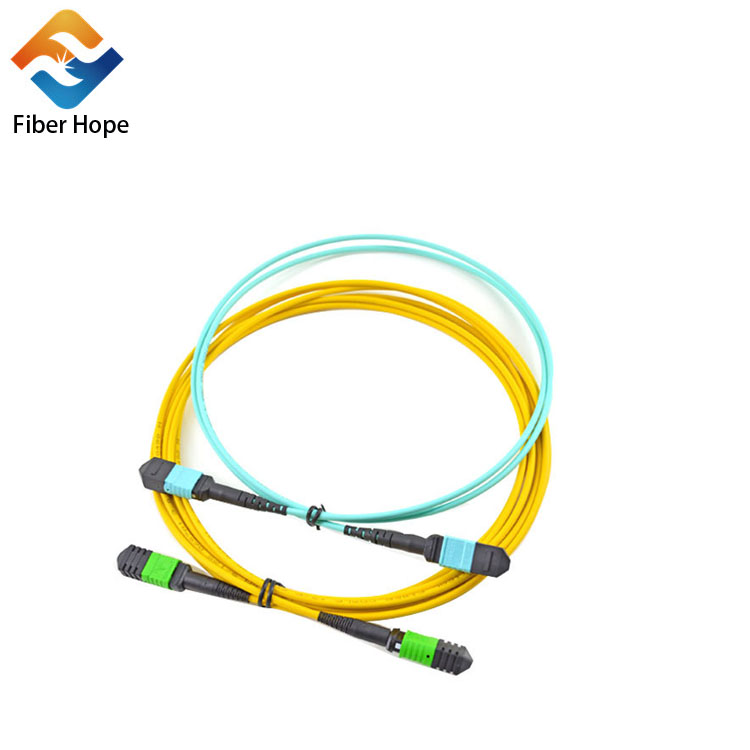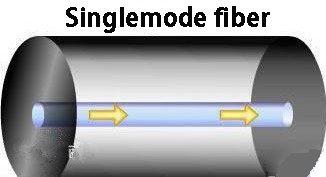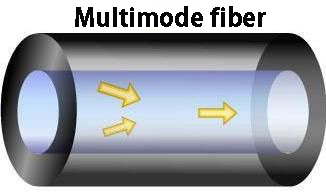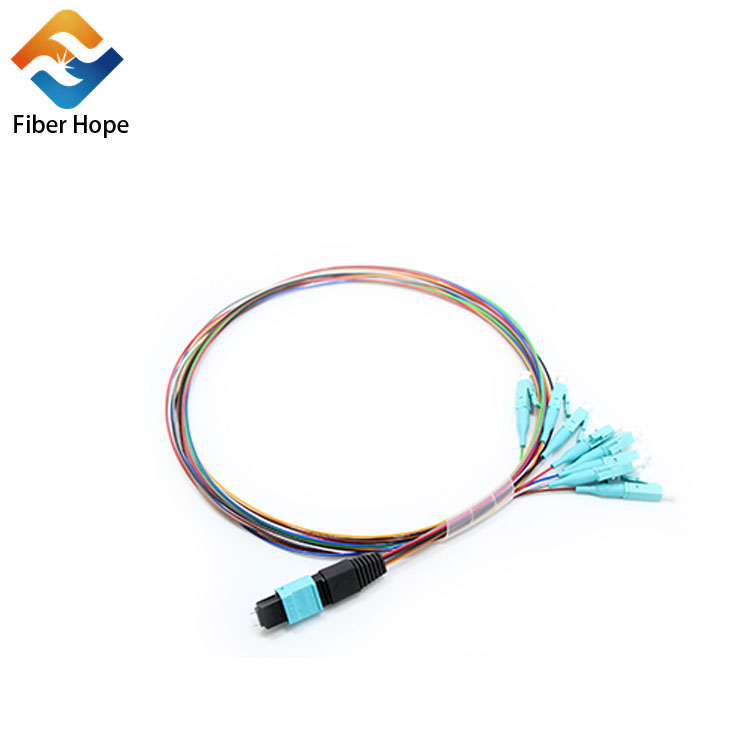Fiber Hope Optical Communication Tech Co.,Ltd.
E-mail:kevin@fh-fiber.com
Fiber Hope optical fiber communication expert & fiber optic cable manufacturer
E-mail:kevin@fh-fiber.com
Fiber Hope optical fiber communication expert & fiber optic cable manufacturer
The so-called "mode" refers to a beam of light entering the fiber at a certain angular velocity. Multimode fiber allows multiple beams of light to propagate in the fiber at the same time, thereby forming mode dispersion (because each "mode" light enters the fiber at a different angle, they reach the other end at a different time. This feature is called mode dispersion.), Mode dispersion technology limits the bandwidth and distance of multimode fiber. Therefore, the core wire of multimode fiber is thick, the transmission speed is low, the distance is short, and the overall transmission performance is poor, but its cost is relatively low. It is generally used in buildings or geographical areas. Location adjacent to the environment. Single-mode fiber can only allow one beam of light to propagate, so single-mode fiber has no mode dispersion characteristics. Therefore, the core of single-mode fiber is relatively thin, and the transmission frequency bandwidth is large, the capacity is large, and the transmission distance is long. However, because it requires a laser source, higher cost.

Single Mode Fiber
Single-mode fiber has only one strand (two strands in most applications) of glass fiber, with a core diameter of 8.3μm~10μm. Due to the relatively narrow core diameter, single-mode fibers can only transmit optical signals with a wavelength of 1310nm or 1550nm, and it is relatively difficult to couple with optical devices. The bandwidth of single-mode fiber is higher than that of multi-mode fiber, but at the same time, it also puts forward higher requirements on the spectrum width and stability of the light source: that is, the spectrum width should be narrow and the stability should be better.

Because single-mode fiber has small dispersion and only transmits one mode of light, it can achieve large-capacity and long-distance transmission. In 100Mbps Ethernet and 1G Gigabit network, single-mode fiber can support transmission distances of more than 5000m. Because the core diameter of single-mode fiber is too small, it is difficult to control the beam transmission, so it needs extremely expensive laser as the light source body. In addition, its transmission rate is higher than that of multi-mode fiber, and the transmission distance is at least 50 times higher than that of multi-mode fiber. The cost of fiber is higher than that of multimode fiber.
For single-mode optical modules, LDs or LEDs with narrow spectral lines are generally used as light sources, and the size of the coupling component is matched with the single-mode optical fiber to achieve high-speed transmission.
Compared with multimode fiber, the core diameter of single-mode fiber is much smaller. The small core diameter and the characteristics of single-mode transmission make the optical signal transmitted in single-mode fiber not be distorted due to the overlapping of optical pulses. Among all fiber types, single-mode fiber has the lowest signal attenuation rate and the highest transmission speed.
Single-mode optical fiber is mostly used in multi-frequency data transmission application systems such as Wave-Division-Multiplexing (WDM). The multiplexed optical signal only needs a single-mode optical fiber to realize data transmission.
Multi Mode Fiber
Multimode fiber is another common fiber type. The core diameter is 50μm~100μm, the working wavelength is 850nm or 1310nm, and the coupling with optical devices is relatively easy. It can transmit multiple modes on a given operating wavelength.
Compared with twisted pair, multimode fiber can support longer transmission distance. In 10mbps and 100mbps Ethernet, multimode fiber can support a longest transmission distance of 2000 meters. The core diameters of common multimode fibers are 50μm, 62.5μm and 100μm.
Since there are hundreds of modes transmitted in a multimode fiber, the propagation constant and group rate of each mode are different, so that the bandwidth of the fiber is narrow, the dispersion is large, and the loss is large. This limits the frequency of the transmission of digital signals, so it is only suitable for For short- and medium-distance, small-capacity optical fiber communication systems, generally only a few kilometers can be transmitted.

Unlike single-mode optical modules, multi-mode optical modules generally use lower-priced LEDs as the light source, and the size of the coupling components is mostly matched with multi-mode optical fibers to achieve ideal transmission effects.
Compared with single-mode fiber, multi-mode fiber has a lower cost. Based on actual needs, most of the optical fibers used in most local area networks are multimode optical fibers.
The difference between single-mode fiber and multi-mode fiber
1. Single-mode fiber supports single-fiber transmission and reception. Its realization is that one end uses 1500 wavelength to transmit and 1300 wavelength to receive, while the other end uses 1500 wavelength to receive and 1300 wavelength to transmit. Some people call this duplex. In fact, it is not very accurate to say that, it should be called multiplexing. Multi-mode fiber only supports dual-fiber transmission and reception. Because multi-mode uses refraction to transmit, two wavelengths cannot be transmitted in different directions on the fiber. Only one wavelength can be used, and it cannot be multiplexed.
2. The single-mode fiber has a small core diameter (about 10mm), allowing only one mode to transmit, with low dispersion, working at long wavelengths (1310nm and 1550nm), and coupling with optical components is relatively difficult; multimode fiber has a large core diameter (62.5mm or 50m m), allowing hundreds of modes to transmit, with large dispersion, working at 850nm or 1310nm. The coupling with optical devices is relatively easy.
3. The logo of multi-mode is "MMF", and the logo of single-mode is "SMF"; if you insert it into the device, look inside, if there is light, it means multi-mode, and no light means single-mode (the principle is that single-mode is used The laser is used as the light source, and the multi-mode uses a light-emitting diode as the light source)
Choose single-mode fiber or multi-mode fiber?
In safety applications, the most common determinant of multimode or single mode is distance. If there are only a few miles, multimode is preferred. Because the LED transmitter/receiver is much cheaper than the laser required for single mode. If the distance is greater than 5 miles, single-mode fiber is best. Another issue to consider is broadband. If future applications may include the transmission of large-bandwidth data signals, then single-mode will be the best choice.

To sum up
Single-mode fiber is suitable for long-distance transmission and has a high price; multi-mode fiber is suitable for short-distance transmission and has a low price. When choosing an optical fiber jumper, you cannot choose blindly. First, you must know your needs, what kind of wiring system and how far the transmission distance is needed, and choose the right fiber according to your needs.
Fiber hope has been committed to the production of fiber optic patch cords for 15 years. For quotation of fiber optic patch cords, please contact: sales001@fh-fiber.com.
copyright©2025 FIBER HOPE OPTICAL COMMUNICATION TECH CO。,LTD。| All Rights Reserved
Hello, please leave your name and email here before chat online so that we won't miss your message and contact you smoothly.